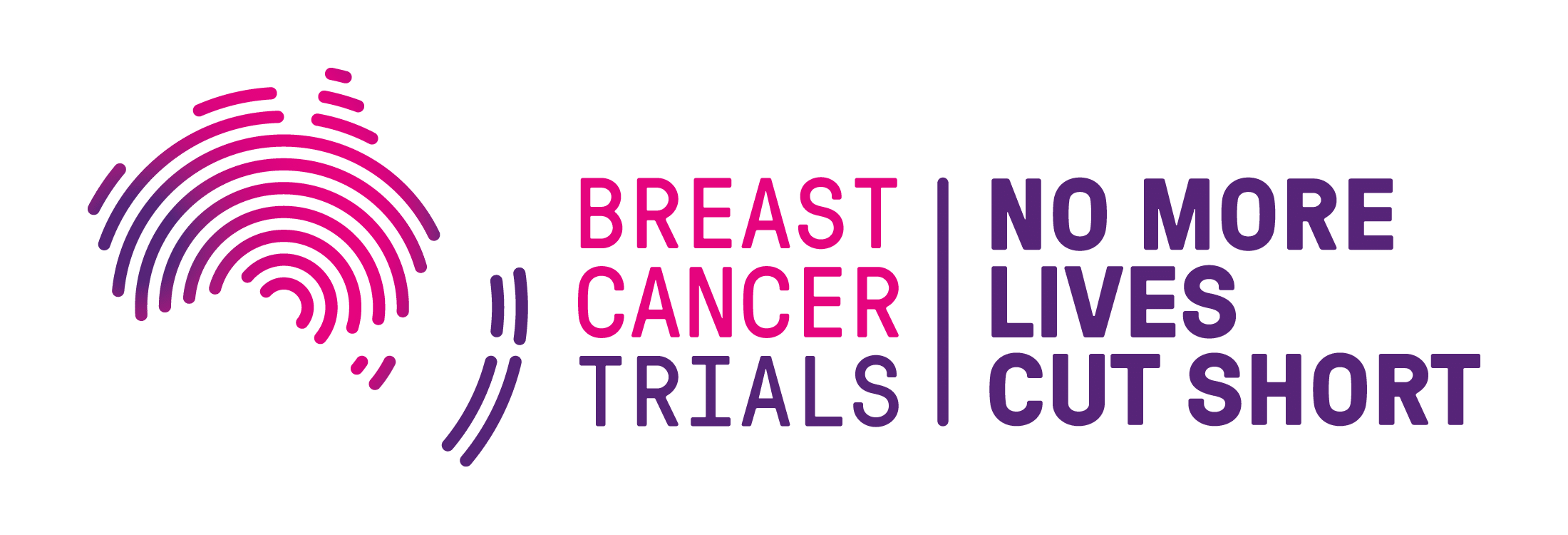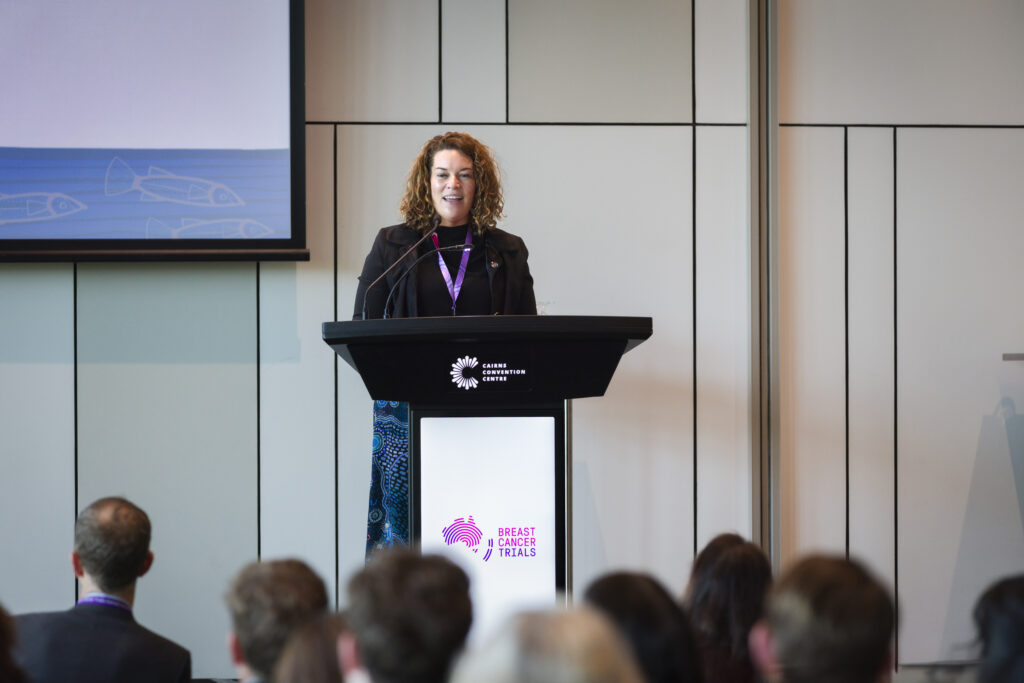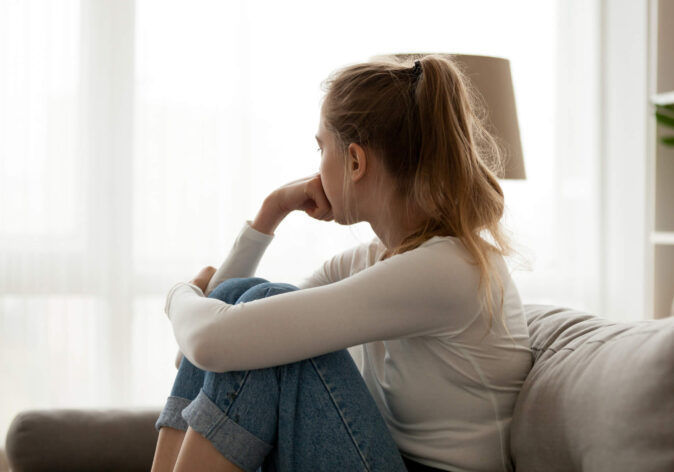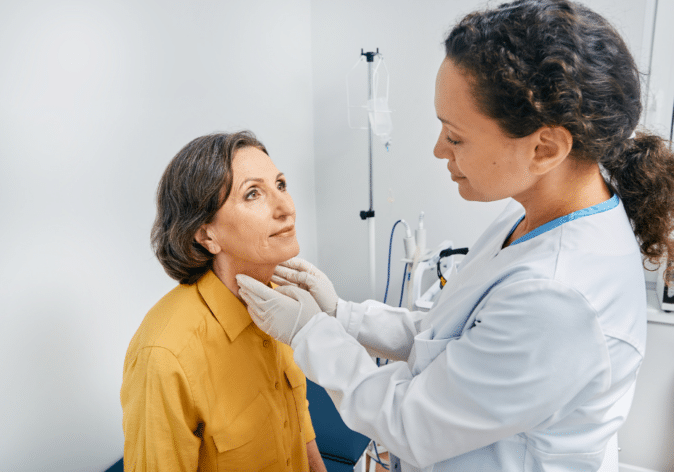Ms Shavaun Wells is a proud Tungurrung woman. The concept of improving Indigenous health, wellbeing, and quality of life resonates with Shavaun and has influenced the roles, research, and studies that she has undertaken.
Shavaun is a Senior Fieldwork Officer on the Kulay Kalingka study, a National Cohort Study aiming to understand Aboriginal and Torres Strait Islander people’s beliefs and attitudes about cancer, engagement with cancer screening programs, and experiences with cancer diagnosis, care and treatment to improve experiences and outcomes. And we spoke with her about the importance of this research.
“I’ve been working as an aboriginal health worker for the last nine years, and I fell into to research. All the women who have passed in my family have passed from breast cancer, so it was more of a passion piece of work to do than an actual job. And I’m currently leading the Kulay Kalingka study.”
“We launched the Kulay Kalingka study last July in Condobolin and we wanted to launch it in a community instead of a university. We launched the video when we were there, so we filmed a video on the day of the launch, which was great to see.”
“Kulay Kalingka translates to “net bag in the water” in Ngiyampaa (Wongaibon) language. Woven net bags have been used by rainforest Bama (peoples) to process highly toxic foods, whereby foods are placed in net bags and run through a slow-moving stream to leach out their toxins and make them safe over time.”
“So the artist who designed our amazing graphics, his name is Bernie Singleton. His wife had stage four ovarian cancer when he was designing this. He’s an Aboriginal man, and he had this idea of designing a net bag to put her in the net bag and let the toxins drain from her body like Aboriginal people would do with fish back in the day to drain out any toxins.”
“We heard his story, and we just went, that’s what we’re doing. So, we did some work with Condobolin, but we had this one lady there and she had five kids. She had to travel five hours to Sydney to undertake a breast screen. She was diagnosed with cancer, so she had to find a babysitter for her five kids.”
“She had to hire a car to get to Sydney to get a treatment. She hit a kangaroo on the way back, she didn’t have the proper insurance, and then was sort of $20,000 in debt from trying to receive her diagnosis, and then she stopped undertaking any treatment after that. And we’ve had so many men say to us ‘I drove to the hospital, but I didn’t know where to park, so I just left’.”
“So, we collect data through surveys. We were really worried about causing Aboriginal people distress when they were talking about their cancer journey, but it was the opposite effect. People were saying, I’ve never had a platform to tell you, or to tell anyone what is going on with my cancer and what I didn’t like, what I did like and what the barriers were for me.”
“So, people have sort of found it a really nice way to get their journey outwards. And we just collect surveys, but we’ve had probably 15 people come to us and say I want to tell you about my journey not just tick boxes.”
“So, we’re just speaking to a 19-year-old Aboriginal man on the Gold Coast who had this cancer that he described as being the size of a Red Bull tin. He was 19 when he had his first diagnosis, and it was Christmas Eve, so everything was closed for a while.”
“We’re just speaking to all these people, because people can tick boxes and we can sort of decipher their story, but to hear their story and to see their photos is just so powerful. So it’s actually sounds like an awful study trying to find out cancer experiences, but people with cancer seem to be empowered by sharing their experience.”
Listen to the Podcast
We spoke to Shavaun about the Kulay Kalingka study, and the concept of improving Indigenous health, wellbeing, and quality of life.
What are some important cultural considerations when providing breast cancer care to Aboriginal and Torres Strait Islander women?
“We’ve found that Aboriginal and Torres Strait Islander women diagnosed with breast cancer were more likely than other Aboriginal and Torres Strait Islander women diagnosed with other cancers to hear the news from an Aboriginal and Torres Strait Islander health worker.”
“Among all women with cancer, only one in three participants felt that the information they received about their cancer at the time of their diagnosis was designed for Aboriginal and Torres Strait Islander people. We also found that it was important where one in three women with breast cancer had family attend their appointments.”
“Aboriginal and Torres Strait Islander women with cancer commonly identified the following factors as important to them during their cancer treatment:
- They really wanted to ensure that family were able to attend their appointments.
- Being culturally safe during their treatment
- Having access to someone who understands their culture
- Having a doctor that they feel comfortable with
- Having an Aboriginal and Torres Strait Islander person to talk to who can support them.”
“The participants of the study were asked whether certain factors delayed any access to their treatment. The most reported factors that hinder timely treatment were location of the treatment centre, cost of the treatment, navigating the healthcare system, racism in the healthcare system was quite prominent and lack of childcare services.”
“Other barriers that Aboriginal and Torres Strait Islander women identified with their cancer treatment was a lot of transport issues, which was higher than other Aboriginal and Torres Strait Islander women with a cancer diagnosis and having to explain and potentially re-explain their story to the healthcare professionals, and some language barriers.”
How can healthcare workers better engage with Aboriginal and Torres Strait Islander communities to improve treatment outcomes?
“When we’ve been speaking with the Aboriginal and Torres Strait Islander women a lot of women have identified that screening services aren’t always close to them.”
“We’ve spoken to quite a lot of women over the age of 40 who are eligible for breast screening but aren’t reminded again to sort of undertake that screening within two years. The system only sends out automatic reminders when they turn 50.”
“We’ve also found that a lot of Aboriginal and Torres Strait Islander people are scared of a diagnosis. So, producing materials that are designed for Aboriginal and Torres Strait Islander people would be a good start.”
What support networks or resources are available to Aboriginal and Torres Strait Islander women diagnosed with breast cancer?
“The Kulay Kalingka study is a national cohort study, so we’ve been able to sort of find some areas that may have cancer navigators or an appropriate McGrath Cancer Nurse, who can point them in the right direction. We found that one in four Aboriginal and Torres Strait Islander women who are on their cancer journey are also caring for someone else on their cancer journey and putting their own needs secondary.”
“So, the idea of a holistic support service that isn’t just directed at the cancer patient, but the family that surrounds that woman or that man with breast cancer would break down some barriers. In some locations, and some quite remote locations, we’ve found Aboriginal and Torres Strait Islander I guess health workers who might’ve been on their own cancer journey, or their family has been on their own journey and therefore they offer to train doctors.”
“It mostly applies in Aboriginal medical services where Aboriginal health workers and GPs or doctors might be working together, and it might be an indirect learning.”
What are your hopes for the future of breast cancer research?
“I guess that the breast cancer journey and awareness become more of a proactive step and not a reactive step, and that Aboriginal and Torres Strait Islander women know that it is okay to undertake cancer screening programs and that they are proactive in doing that. I also hope that there can be some services that are close to home, and that there aren’t financial costs.”
“A lot of people say that cancer treatment is free, but we’ve come across a lot of women who need to organise babysitters, their own accommodation, their petrol, and they’ve got to pay for parking at the hospital, just as some examples.”
“So there seems to be a lot of other barriers that aren’t really considered when you say that cancer treatment is free.”
Support Us
Help us to change lives through breast cancer clinical trials research



